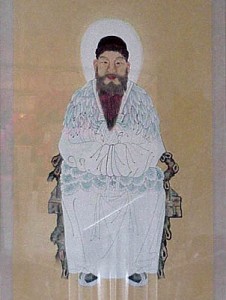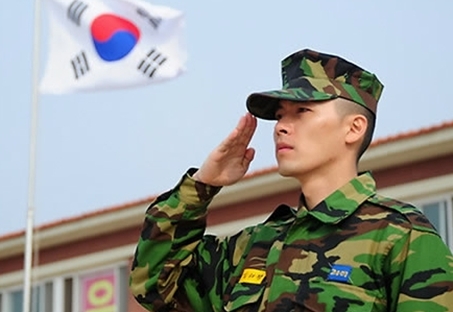 We here at Seoulbeats have talked on occasion (and sometimes at length) about Korean nationalism: a perhaps unique brand of ethno-nationalist feeling that, despite their vast contemporary political differences, is somewhat shared (though in dissimilar manifestations) between North and South Korea. Korean nationalism is often used to explain The Bad about South Korean society; think discrimination against biracial and non-ethnic Koreans living in South Korea, flared tempers over Dokdo, a general societal butthurtism over perceived international slights, and a penchant for wildly inaccurate conspiracy theories. While there is a grain (and sometimes more than a grain) of truth to this, it is far easier to point the finger than it is to take some time to understand where and how such nationalism may have originated.
We here at Seoulbeats have talked on occasion (and sometimes at length) about Korean nationalism: a perhaps unique brand of ethno-nationalist feeling that, despite their vast contemporary political differences, is somewhat shared (though in dissimilar manifestations) between North and South Korea. Korean nationalism is often used to explain The Bad about South Korean society; think discrimination against biracial and non-ethnic Koreans living in South Korea, flared tempers over Dokdo, a general societal butthurtism over perceived international slights, and a penchant for wildly inaccurate conspiracy theories. While there is a grain (and sometimes more than a grain) of truth to this, it is far easier to point the finger than it is to take some time to understand where and how such nationalism may have originated.
First, what constitutes Korean nationalism?
Korean nationalism is intrinsically tied up with the idea that Koreans are an ethnically homogenous people that have occupied the Korean peninsula since time immemorial. Specifically, Koreans trace their history back to 2333 BC, when the mythical founder of the Korean race, Tan’gun, was said to have been born of the god Hwan-ung and his bride Ung-nyeo. As the story goes, Hwan-ung, son of the god Hwan-in, wished to live on the earth, and so his father permitted him to descend from the heavens to Mount Paektu, a historic mountain located on the North Korea/China border (incidentally, Mount Paektu is also the fictitious birthplace of late North Korean leader Kim Jong-il — though Soviet records indicate that he was most definitely born in the Soviet Union). After his arrival on earth, Hwan-ung was approached by a tiger and bear, both of whom expressed the desire to become humans. Hwan-ung told them that they must live in a dark cave for 100 days eating only mugwort and garlic in order to become human; the tiger, however, could not endure and fled from the cave before 100 days had passed. Because the bear successfully passed Hwan-ung’s test, Hwan-ung turned it into a human woman, with whom he later had the child Tan’gun. Tan’gun would become the father of the Korean people, a great and legendary ruler.
 Of course, most people in South Korea acknowledge that the myth of Tan’gun is just that — a myth. Some have argued that it must have been based on a true story or some historical figure, but realistically, most people also understand on some level that the story could not possibly be grounded in fact; indeed, the story first appeared in the Samguk yusa, historical annals from Korea that date back to the fourteenth or fifteenth centuries — curiously late to be writing a story that purportedly took place in 2333 BC. However, the idea of Koreans as a one-race people (danil minjok, or 단일 민족) descended from a single bloodline has become almost disturbingly pervasive. Efforts to trace this uninterrupted bloodline throughout history have even involved the obvious distortion of historical fact and have led to disputes with other East Asian powers, most notably China (the reason? Both states laid claim to the ancient state of Koguryŏ, whose ownership would seriously impact the contemporary nationalist narratives of both countries). The bloodline idea has also taken a particularly strong hold in North Korea, which claimed to have unearthed Tan’gun’s tomb a few years ago (an obviously political and obviously fabricated move). But what accounts for the idea’s tenacity?
Of course, most people in South Korea acknowledge that the myth of Tan’gun is just that — a myth. Some have argued that it must have been based on a true story or some historical figure, but realistically, most people also understand on some level that the story could not possibly be grounded in fact; indeed, the story first appeared in the Samguk yusa, historical annals from Korea that date back to the fourteenth or fifteenth centuries — curiously late to be writing a story that purportedly took place in 2333 BC. However, the idea of Koreans as a one-race people (danil minjok, or 단일 민족) descended from a single bloodline has become almost disturbingly pervasive. Efforts to trace this uninterrupted bloodline throughout history have even involved the obvious distortion of historical fact and have led to disputes with other East Asian powers, most notably China (the reason? Both states laid claim to the ancient state of Koguryŏ, whose ownership would seriously impact the contemporary nationalist narratives of both countries). The bloodline idea has also taken a particularly strong hold in North Korea, which claimed to have unearthed Tan’gun’s tomb a few years ago (an obviously political and obviously fabricated move). But what accounts for the idea’s tenacity?
Perhaps unsurprisingly, most Koreans in the late 1800s didn’t really care (or know that much) about Tan’gun. In fact, Koreans of the time had almost no nationalist sentiment (as we would interpret it in the modern day) of which to speak. 19th century Korea was a neo-Confucian monarchy dominated by class factionalism and kinship ties; the idea that everyone living on the peninsula was part of some grand race that had inhabited the landmass known as Korea for five thousand years essentially didn’t exist. Really, it only came into popular consciousness out of necessity — as do so many nationalist narratives.
By the early 20th century, the situation on the Korean peninsula had taken a dramatic turn for the worse. Competition between regional and European powers over influence in Korea, which was viewed as critical to strategic security and intellectual interests, resulted in a series of tussles between Russia, China, and Japan. As many of our readers will know, it was eventually Japan who walked away the victor, turning Korea into a protectorate in 1905 and annexing it in 1910. Ultimately, it was this dire political situation in the late 1800s and early 1900s that spurred Korean intellectuals to “rediscover” and redefine the unified history of the Korean peninsula, developing a nation-centric vocabulary that placed the Korean ethnic nation at the heart of Korea’s struggle to maintain its sovereignty. Newspapers and the written word, particularly the Tongnip Sinmun (The Independent) and the Hwansŏng Sinmun (Capital Gazette), became mouthpieces for these new ideas and vocabulary, introducing concepts of minjok (the ethnic nation) and a freshly interpreted constitutive story into the popular consciousness. Also critical to this endeavor were the decentralizing of China’s dominant role in Korea’s history (China had more or less exercised de facto suzerainty over the Korean peninsula for centuries), the promulgation and promotion of hangul, the uniquely Korean script invented by King Sejŏng in the fifteenth century, as the national script, and the sudden introduction and elevation of Tan’gun as the father of the Korean people.
 Naturally, the idea that Koreans were a special and unique people destined to inhabit the Korean peninsula was an attractive one, especially because the Japanese annexation resulted in increasing attempts at stifling Korean culture and language among the Korean people. By the time World War II liberated the Korean peninsula, Koreans were barely even allowed to speak Korean; Japanese had replaced Korean as the lingua franca, and Koreans were instructed to abandon their Korean last names for Japanese ones. Following liberation, the newly established states on both sides of the 38th parallel made it a priority to emphasize the brand of Korean ethno-nationalism that grew out of the colonial period — and both have done so with varying degrees of severity.
Naturally, the idea that Koreans were a special and unique people destined to inhabit the Korean peninsula was an attractive one, especially because the Japanese annexation resulted in increasing attempts at stifling Korean culture and language among the Korean people. By the time World War II liberated the Korean peninsula, Koreans were barely even allowed to speak Korean; Japanese had replaced Korean as the lingua franca, and Koreans were instructed to abandon their Korean last names for Japanese ones. Following liberation, the newly established states on both sides of the 38th parallel made it a priority to emphasize the brand of Korean ethno-nationalism that grew out of the colonial period — and both have done so with varying degrees of severity.
While South Korea’s ethno-nationalism is often credited with pulling the fledgling state out of an economic crisis in the 1970s and 1980s, it has come under fire in recent years for failing to adapt to a changing and increasingly globalized world. Gradually more porous borders and the growth of multiethnic families in South Korea have led to calls for a more inclusive nationalist philosophy, arguing that ethnic nationalism is no longer sustainable nor practical for South Korea’s future. Though efforts have been made to be more inclusive, much of South Korean society is still held captive by ethnically-inspired beliefs. It remains to be seen if this will change in the future.
(Stanford University, Life in Korea, Samguk yusa, Andre Schmid, Korea Between Empries, 1895-1919 (New York: Columbia University Press, 2002), Kang Hyun Sook, “New Perspectives of Koguryŏ Archaeological Data,” in Early Korea, Volume 1: Reconsidering Early Korean History Through Archaeology, ed. Mark E. Byington (Cambridge: Korea Institute, Harvard University, 2008))


